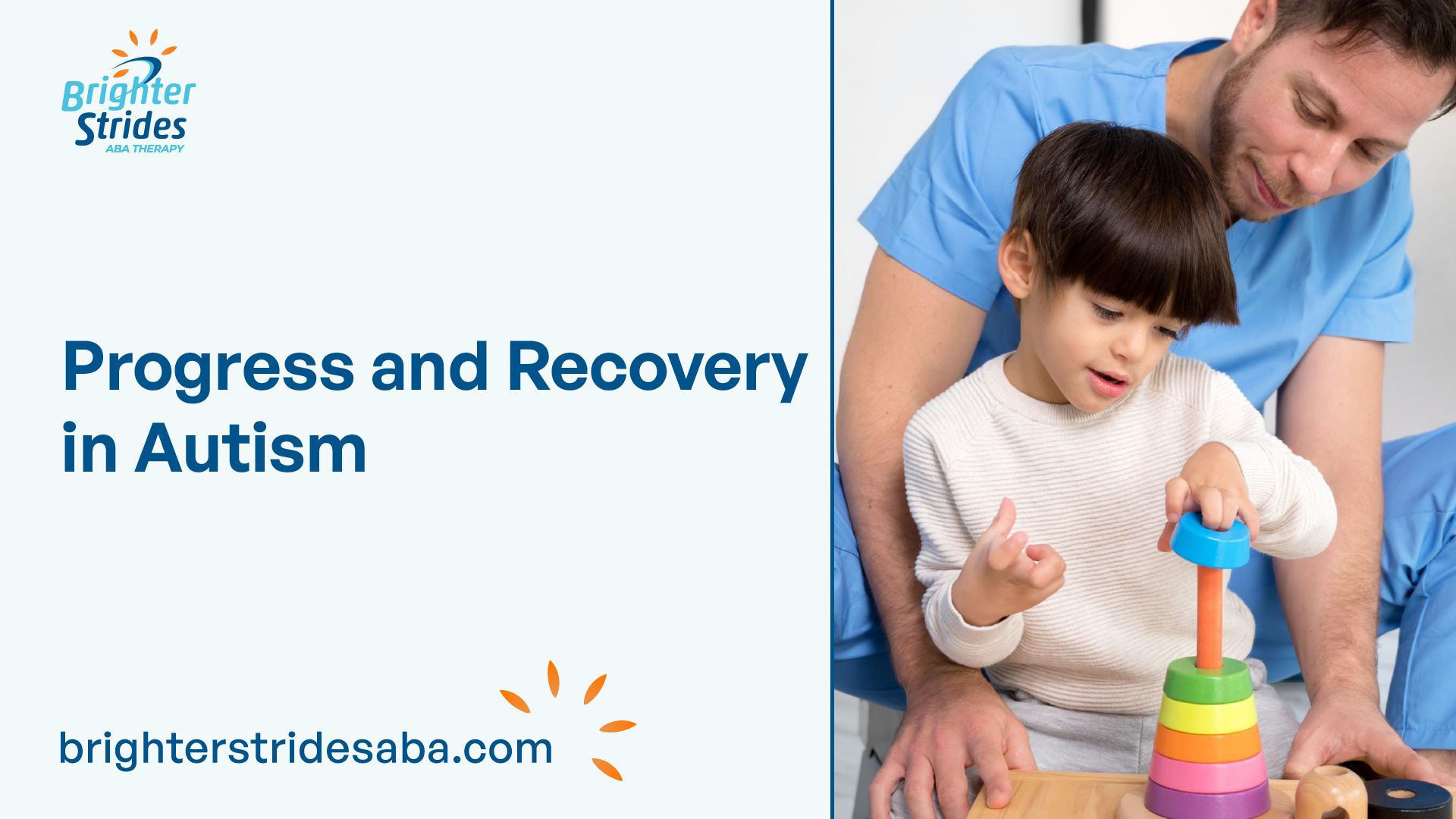Understanding Autism Spectrum Disorder
Autism Spectrum Disorder (ASD) is a neurodevelopmental disorder characterized by difficulties in social interaction, communication, and restricted or repetitive behaviors. Understanding the definition and characteristics of autism, as well as its prevalence and diagnosis, is essential for gaining insight into this complex condition.

Definition and Characteristics of Autism
Autism is a lifelong condition that affects individuals differently, resulting in a wide range of abilities and challenges. Many children diagnosed with autism show significant improvement and can lead full, productive lives. However, it is important to note that there is currently no known cure for autism.
The characteristic features of autism include:
- Impairments in social interaction: Individuals with autism may have difficulty understanding and responding to social cues, forming and maintaining friendships, and engaging in reciprocal conversations.
- Communication difficulties: Some individuals with autism may struggle with spoken language, while others may have an extensive vocabulary but struggle with pragmatic language skills, such as understanding non-literal language and using appropriate gestures.
- Restricted and repetitive behaviors: This can manifest as repetitive movements (e.g., hand-flapping, rocking), adherence to rigid routines, intense interests in specific topics, and sensory sensitivities.
Prevalence and Diagnosis of Autism
Autism is a relatively common neurodevelopmental disorder. The prevalence of autism has been increasing over the years. However, it is important to note that this increase may be due to better awareness and improved diagnostic criteria.
Diagnosing autism involves a comprehensive evaluation by healthcare professionals, including developmental pediatricians, psychologists, and speech-language pathologists. The diagnosis is based on observed behaviors and developmental history. The criteria for diagnosing autism are outlined in the Diagnostic and Statistical Manual of Mental Disorders (DSM-5).
Early diagnosis and intervention play a crucial role in improving outcomes for individuals with autism. Early intervention services can help children learn important skills, which can lead to better outcomes later in life. Interventions may include therapy to help the child talk, walk, and interact with others.
By understanding the definition, characteristics, prevalence, and diagnosis of autism, we can gain a foundation for exploring the various treatment approaches and possibilities for progress and recovery in individuals with autism.
Treatment Approaches for Autism
When it comes to treating autism, there are various approaches that can help individuals with the condition improve their skills and overall quality of life. In this section, we will explore some of the key treatment approaches for autism, including early intervention, behavioral therapies, speech and language therapy, and occupational therapy.
Early Intervention and its Impact
Early intervention services play a crucial role in supporting children with autism. These services aim to help children learn important skills that can lead to better outcomes later in life. Early intervention may include various therapies to assist children in developing communication, social, and daily living skills. Research has shown that early intensive autism intervention, such as the Early Start Denver Model (ESDM), can lead to long-term improvement in intellectual abilities and reduced autism symptoms even years after the treatment has been completed.
Behavioral Therapies for Autism
Behavioral therapies, such as Applied Behavior Analysis (ABA), are widely recognized as one of the most effective treatments for autism. ABA programs focus on teaching individuals with autism communication and social skills. These programs utilize techniques such as positive reinforcement and structured learning to help individuals develop and enhance their skills.
Speech and Language Therapy for Autism
Speech and language therapy is an essential component of autism treatment. This therapy aims to help individuals with autism improve their communication skills, including speaking and listening. Through various techniques and exercises, speech-language therapists work with individuals to enhance their ability to express themselves and understand others.
Occupational Therapy for Autism
Occupational therapy focuses on helping individuals with autism develop and improve the skills necessary for daily living. This therapy aims to enhance abilities related to activities such as dressing, feeding, bathing, and fine motor skills. Occupational therapists work closely with individuals to address their specific needs and support their independence and overall well-being.
By utilizing a combination of early intervention, behavioral therapies, speech and language therapy, and occupational therapy, individuals with autism can make significant progress in their development and daily functioning. It’s important to note that the effectiveness of these treatments can vary for each individual. Consulting with healthcare professionals and specialists who specialize in autism can help determine the most suitable treatment plan for each person.
Dietary Interventions for Autism
In the pursuit of supporting individuals with autism, dietary interventions have been explored as potential complementary treatments. While more research is needed to fully understand their effectiveness, certain dietary approaches have shown promise. This section will delve into three commonly discussed dietary interventions for autism: gluten-free and casein-free diets, the ketogenic diet, and the use of vitamin and mineral supplements.
Gluten-Free and Casein-Free Diets
Gluten-free and casein-free diets involve the elimination of gluten, found in wheat and other grains, and casein, found in dairy products, from one’s diet. It is hypothesized that removing these substances may alleviate certain symptoms associated with autism. However, it is important to note that the evidence supporting the effectiveness of these diets is limited and further research is needed to draw definitive conclusions.
Ketogenic Diet and its Effects on Autism
The ketogenic diet, a low-carbohydrate and high-fat diet that promotes the production of ketones in the body, has gained attention for its potential impact on autism. Research suggests that a carbohydrate-free ketone diet may lead to significant improvements in the behavior and cognitive skills of children with autism and ASD. However, it’s important to consult with a healthcare professional before implementing this diet, as it requires careful monitoring and supervision.
Vitamin and Mineral Supplements for Autism
Vitamins and mineral supplements have been explored as a means to improve metabolic functioning and address certain symptoms associated with autism. Research suggests that these supplements can potentially reduce hyperactivity and tantrums in children with autism and ASD. However, it is crucial to consult with a healthcare professional before introducing any supplements, as they should be used in appropriate dosages and tailored to individual needs.
It is worth noting that while dietary interventions like gluten-free and casein-free diets, the ketogenic diet, and vitamin and mineral supplements have shown promising results in some cases, they are not considered universal treatments for autism. Each individual with autism is unique, and what works for one person may not work for another. It is important to approach dietary interventions with caution and seek guidance from healthcare professionals who specialize in autism to ensure the most appropriate and safe approach is taken.
Continued research in this field is crucial to better understand the potential benefits and limitations of dietary interventions for individuals with autism. By further exploring these interventions, we can continue to expand our knowledge and provide more comprehensive support for individuals on the autism spectrum.

Progress and Recovery in Autism
While there is no known cure for autism, individuals with autism can make significant progress and improvements in their lives with appropriate treatments and therapies. Early diagnosis and interventions play a crucial role in enhancing the outcome and quality of life for individuals with autism spectrum disorder (ASD). Let’s explore some case studies of individuals with autism, long-term outcomes, and the factors that influence progress and recovery.
Case Studies of Individuals with Autism
Case studies provide valuable insights into the potential for progress and recovery in autism. One notable success story is that of Temple Grandin, who was diagnosed with autism in the 1950s. Through early and intensive intervention, she excelled academically and professionally, becoming a renowned author, professor, and advocate for individuals with autism.
Another significant study conducted by Dr. Ivar Lovaas in the 1980s demonstrated that nearly half of the children who underwent intensive behavior therapy no longer met the criteria for autism post-treatment. These case studies highlight the potential for remarkable progress and improvement in individuals with autism.
Long-Term Outcomes and Success Stories
Long-term outcomes for individuals with autism can vary widely. While some individuals may continue to face challenges associated with autism throughout their lives, many individuals diagnosed with autism show significant improvement and can lead full, productive lives. Success stories of individuals like Tito Mukhopadhyay, Carly Fleischmann, and others demonstrate that recovery from autism is recognized as a possible outcome. These individuals have defied early expectations and achieved remarkable successes in various domains of life.
Factors Influencing Progress and Recovery
Several factors can influence the progress and recovery of individuals with autism. Early intervention plays a critical role in improving developmental outcomes. Interventions may include therapy to help children acquire essential skills such as communication, social interaction, and daily living skills. Applied Behavior Analysis (ABA) programs, in particular, have been shown to be effective in helping children learn communication and social skills.
Individualized and tailored interventions are also key in helping individuals with autism make significant progress. By understanding and supporting the unique needs of each individual, positive outcomes can be achieved.
While recovery from autism is possible for some individuals, it’s essential to recognize and celebrate the diverse experiences of individuals with autism. Each person’s journey is unique, and progress should be measured in terms of individual achievements and strengths. By providing the necessary support and interventions, individuals with autism can lead fulfilling lives and reach their full potential.
Genetic Factors in Autism
While the exact causes of autism spectrum disorder (ASD) are still being studied, research has shown that genetic factors play a significant role in its development. In this section, we will explore the genetic variations associated with autism, syndromic autism with known genetic causes, and the role of copy number variants (CNVs) and genomic instability.
Genetic Variations and Risk of Autism
Genetic factors contribute to more than 50% of the risk of developing autism spectrum disorder (ASD) [source]. Studies that have examined twin pairs, high-risk infant siblings, families, and populations have estimated concordance rates and observed the segregation of the disorder within families [source]. However, it’s important to note that no single gene has been identified as the sole cause of ASD.
More than 25% of individuals with ASD have identifiable, causative, and protein-disrupting rare genetic mutations. These mutations are typically rare and account for no more than 1% of cases individually [source]. The heterogeneity of ASD and variable penetrance contribute to the complex genetic landscape of the disorder.
Syndromic Autism and Known Genetic Causes
Syndromic autism refers to cases where autism is associated with known genetic causes. Approximately 3-5% of individuals with ASD have syndromic autism [source]. Syndromic autism is often associated with single-gene disorders, such as fragile X syndrome, tuberous sclerosis complex, Dup15q syndrome, and Rett syndrome [source]. These disorders are characterized by specific genetic mutations that are known to contribute to the development of autism.
Copy Number Variants and Genomic Instability
Copy number variants (CNVs) are variations in chromosomal structure that can be either common or rare. Studies have shown an increased frequency of CNVs in individuals with ASD compared to those without the disorder [source]. This suggests that there may be excessive genomic instability in individuals with autism.
The frequency of de novo CNVs (CNVs that arise spontaneously) in individuals with ASD has been reported to be 3-19% in ASD cases from both simplex and multiplex families [source]. In contrast, the frequency of de novo CNVs in healthy controls is approximately 1%. These findings highlight the potential role of CNVs in the genetic architecture of autism.
Mutations in synaptic genes, including neurexins and neuroligins, have consistently been identified as genetic abnormalities in ASD. These mutations have also been observed in other neuropsychiatric disorders, such as schizophrenia and Alzheimer’s disease. This suggests a common pathway among these major neuropsychiatric illnesses [source].
Understanding the genetic factors associated with autism is crucial for advancing our knowledge of the disorder and developing targeted treatments. By studying genetic variations, syndromic autism, and genomic instability, researchers are uncovering valuable insights into the underlying mechanisms of autism spectrum disorder.
Future Directions and Research
As research and understanding of autism spectrum disorder (ASD) continue to evolve, advancements in treatment approaches and promising areas of research offer hope for individuals with autism and their families. Early intervention remains a key focus, emphasizing the importance of timely and targeted interventions to support individuals with autism.
Advancements in Autism Treatment
One of the most significant advancements in autism treatment involves early intervention services. These services aim to help children with autism learn important skills that can lead to better outcomes later in life. Early intervention may include various therapies such as speech and language therapy, occupational therapy, and applied behavior analysis (ABA) programs.
Studies have shown that early intensive autism intervention, such as the Early Start Denver Model (ESDM), can lead to long-term improvement in intellectual abilities and reduced autism symptoms even years after the treatment has been completed [2].
Promising Areas of Research
Ongoing research in the field of autism focuses on developing new strategies and interventions to further enhance treatment outcomes. Some promising areas of research include:
- Pharmacological interventions: Researchers are investigating the potential of medications to target specific symptoms associated with autism, such as repetitive behaviors and social communication challenges. While no medication can currently cure autism, these studies aim to identify ways to alleviate specific symptoms and improve overall functioning.
- Technology-based interventions: The use of technology, such as virtual reality and computer-based programs, shows promise in providing innovative ways to enhance social and communication skills in individuals with autism. These interventions capitalize on the strengths of individuals with autism in interacting with technology and offer opportunities for personalized and engaging interventions.
- Genetic research: Continued exploration of the genetic factors contributing to autism spectrum disorder is shedding light on potential underlying causes and the identification of subtypes within the autism spectrum. This knowledge can lead to more targeted and personalized interventions based on an individual’s genetic profile.
The Importance of Early Intervention
Research consistently emphasizes the critical role of early intervention in improving long-term outcomes for children on the autism spectrum. Early intervention services, such as speech therapy, occupational therapy, and ABA programs, have shown positive effects in developing communication, social, and daily living skills in individuals with autism. Early initiation of interventions, often before 30 months of age, has been found to be particularly beneficial in supporting positive outcomes [2].
By identifying and addressing the unique needs of each individual with autism at the earliest possible stage, it becomes possible to provide tailored interventions that can make a significant difference in their lives. The continued focus on early intervention as a cornerstone of autism treatment highlights the importance of identifying autism symptoms early and promptly accessing appropriate supports and services.
As research progresses and new interventions are developed, the hope for improved outcomes and potential recovery from autism remains a glimmer of hope for individuals with autism and their families. By staying informed about advancements in autism treatment and the importance of early intervention, individuals with autism can receive the support they need to thrive and reach their full potential.
References
- https://www.cdc.gov/ncbddd/autism/treatment.html
- https://www.washington.edu/news/2015/06/09/early-intervention-improves-long-term-outcomes-for-children-with-autism/
- https://www.ncbi.nlm.nih.gov/pmc/articles/PMC7815266/
- https://www.helpguide.org/articles/autism-learning-disabilities/autism-treatments-therapies-interventions.htm
- https://www.appliedbehavioranalysisedu.org/5-autism-success-stories/

 We've just released an article! Check out our blog!
We've just released an article! Check out our blog! 


